MoonBeam3 is highly effective anywhere dangerous bacteria and viruses lurk, and is uniquely designed for maximum versatility. Its three articulating arms can be positioned vertically, horizontally or angled, allowing the dose to get close or at a distance up to 7 feet. Incredibly easy to use and operate, it’s also lightweight and highly portable to allow for disinfection when and where it’s needed. MoonBeam3’s powerful 254-nanometer wavelength UV-C is ideal for anything – from tight spaces to whole room disinfection, and is used in a variety of applications.
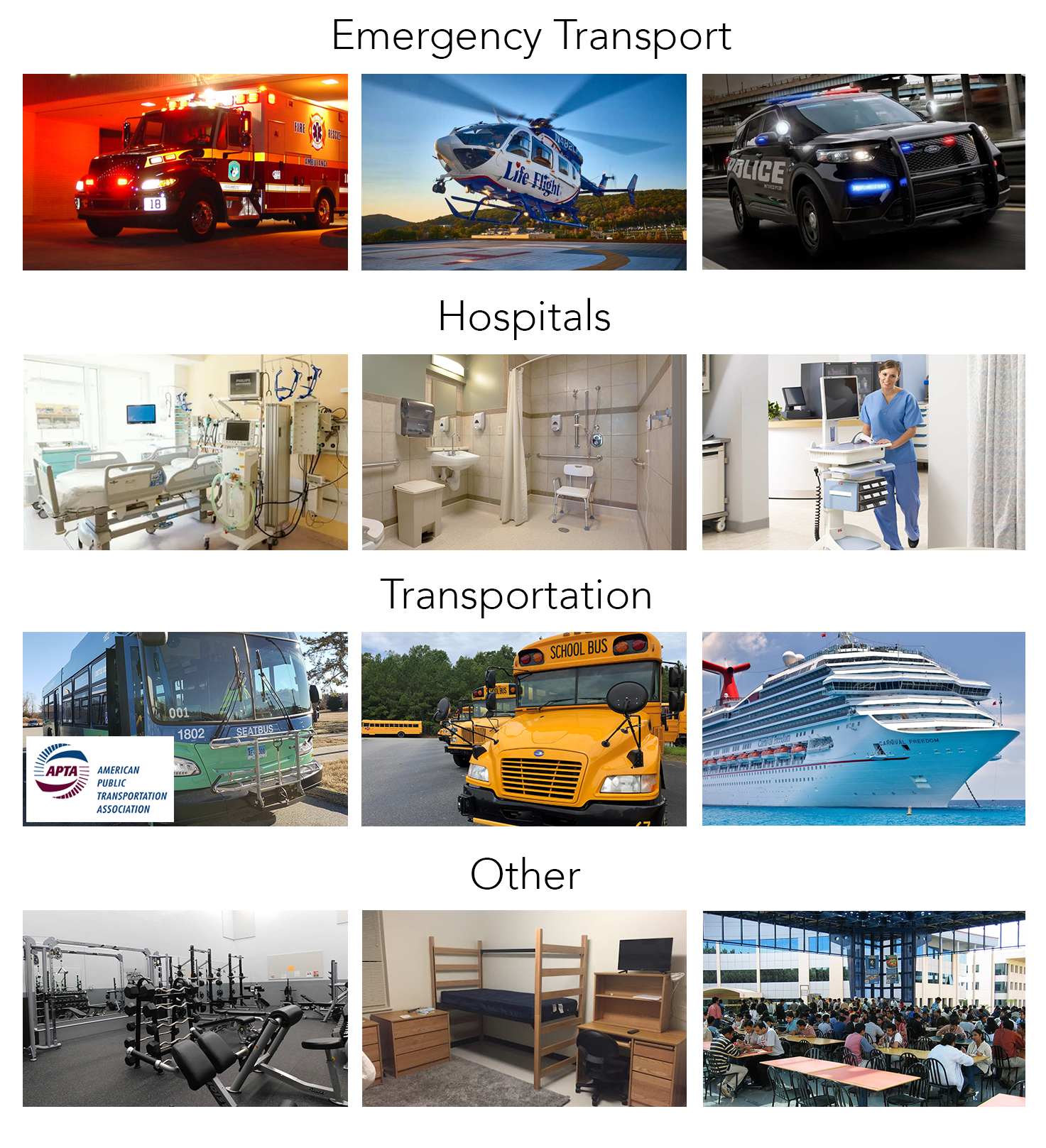
True application (and using devices in more than one location)
Finally, the laws of physics promote using MoonBeam3 (or any other UVC system) once on each side of the area that is being disinfected. It is possible to leave a device positioned in one spot and run for longer cycles, much longer cycles, and attain increased log reductions, but it is significantly faster and more robust to simply move the device. There are few surfaces that reflect ultraviolet energy with any practical level of efficiency.
As an example of the significant benefit of repositioning the device, the following chart is from the team at the Cleveland Veterans Affairs Medical Center testing MoonBeam3. Note that there is some improvement by simply running a longer cycle, but far greater impact by moving one time.
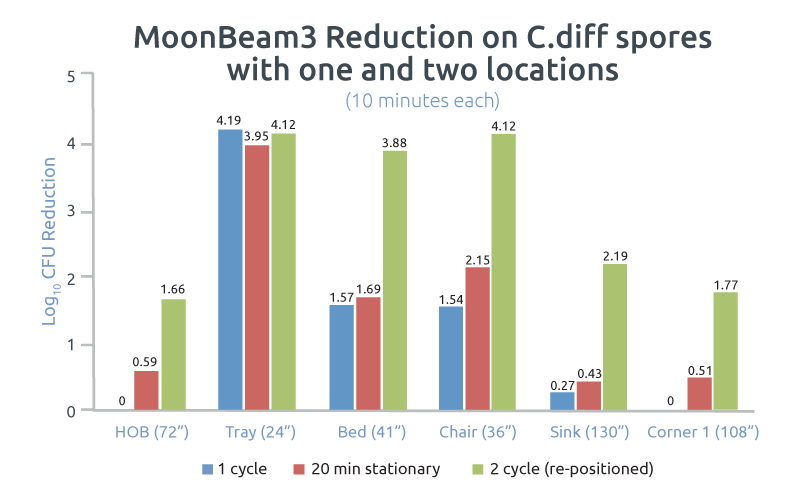
Results in the lab and artificial pathogen in-room testing are helpful indicators, but it is even more significant to test how they work in actual practice. MoonBeam3 works incredibly well – and quickly.
Real World Use
Efficacy in the patient environment is the critical metric and MoonBeam3 results are shown the following charts (courtesy Dr. Donskey et al., Louis Stokes Veteran’s Affairs Medical Center). Note that this data is direct from the site surfaces without pre-cleaning by EVS. It is always recommended to use UVC as an adjunct cleaning tool, but this was a test to assess a worst-case condition.
- Near Composite Items: Table, call button, phone, & toilet seat
- Far Composite Items: Foot of Bed, chair, floor, bathroom floor & shower
- Sites were assessed for MRSA, Staphylococcus aureus, VRE, C. difficile spores, gram negative organisms, & total aerobic counts


Additionally, the results in the following tables are from testing conducted in New Mexico following a similar protocol – testing both pre and post EVS cleaning efforts with 5-minute cycles. Again, these real word results show the solid efficacy of the MoonBeam3.
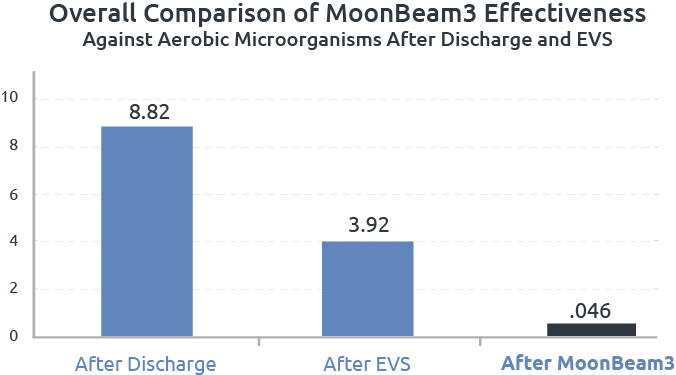
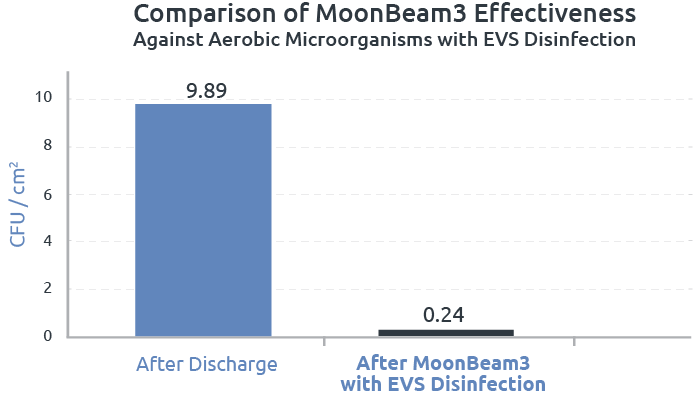
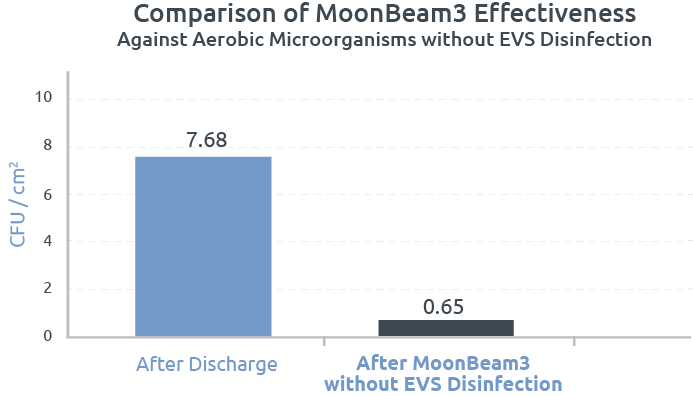
Results Summary
The results illustrated show the overall average of aerobic colony counts on all surfaces tested after discharge was 8.82 CFU/cm2. Recommend values for ACC on environmental surfaces are intended to be less than 2-2.5 CFU/cm2. Any surface with values above this recommended level are considered contaminated. The results from surfaces disinfected by EVS showed a 55% reduction in ACC to 3.92 CFU/cm2. Lastly, surfaces exposed to Moonbeam3 treatment resulted in a 95% reduction in ACC to 0.46 CFU/cm2. Moonbeam3 outcomes were significantly different when compared to after discharge and after EVS data using a two-sample t test P < 0.01.
The next data set highlights differences between treatment with Moonbeam3 with and without EVS disinfection. The graph illustrates a 98% reduction in ACC from 9.89 to 0.24 CFU/cm2 with EVS disinfection followed by Moonbeam3 treatment. Similarly, the third graph showed a 92% reduction in ACC from 7.68 to 0.65 CFU/cm2 without EVS disinfection.
Summing this up, both laboratory and in-room testing results with the Moonbeam3 demonstrate its effectiveness to significantly reduce aerobic colony counts on surfaces, and provide significant log reductions in even the more challenging pathogenic spores, like C. difficile.
